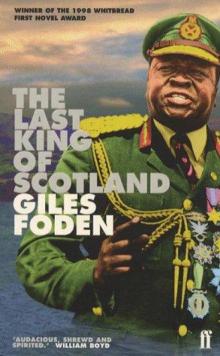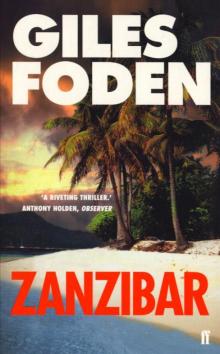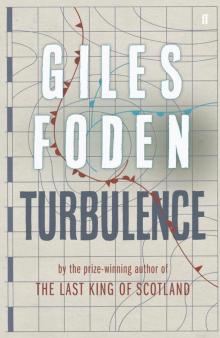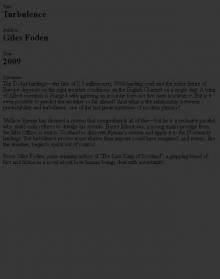- Home
- Giles Foden
2004 - Mimi and Toutou Go Forth Page 16
2004 - Mimi and Toutou Go Forth Read online
Page 16
Shankland’s 1968 account of the expedition is happily free from imperialist prejudice. The same cannot be said, alas, of Magee writing in 1922. His description of the test flight of two seaplanes (which arrived immediately after the capture of the Kingani)↓ perfectly illustrates the rhetorical devices used to emphasise the ‘otherness’ of Africans.
≡ Manufactured and supplied by Britain, the planes had Belgian pilots. Armed with 65-pound and 16-pound bombs and four machine-guns apiece, they were assembled at a Belgian post 25 miles south of Albertville.
It so happened that at about the time the Marconi operators made a test of their apparatus the Belgian airmen down the coast, having fixed up one of their seaplanes, decided to make a trial flight. Picture, therefore, the amazement of the superstitious negroes when, shortly after the wireless had begun sending test messages, with the rasping, crackling of electric sparks, lo and behold came the answer to their prayers to Heaven, as the natives thought, in the form of a low droning, gradually getting louder!
Suddenly the seaplane shot into view out of the clouds, describing circles and going through sundry evolutions over the camp. The natives stood spell-bound, gazing upward with arms extended, eyes bulging, and mouths agape.
The airman then made a sudden dive downward and that broke the spell. The savages bounded off into the bush, terror lending wings to their progress. Mothers snatched up their pickaninnies and dived for the shelter of their kraals, shrieking at the top of their voices. It was real pandemonium…
The Holo-holo should not have been underestimated. They understood very well that the balance of power on the lake had shifted. As a result, German intelligence on Belgian activities withered, according to Byron Farwell: ‘The Ba-Holo-holo switched their allegiance from the Germans to the skirted British god, the new master of the lake. The Belgians obtained an extra bonus from the expedition: they no longer had to fear an uprising. The Germans, kept in the dark, still did not know about Mimi and Toutou, nor did they know what had happened to the Kingani.’
Nevertheless, Bwana Chifunga-Tumbo—or Lord Bellycloth as the tribespeople now dubbed Spicer, in honour of his skirt—still had a lot of work ahead of him. He had yet to fulfil his orders and sink the Hedwig von Wissmann, which had been sighted scouting the coast after the Kingani’s disappearance. And then there was also the matter of the Germans’ largest vessel on Lake Tanganyika: the Graf von Götzen was clearly a formidable prospect.
EIGHTEEN
Rain fell heavily on the camp at Albertville in the first weeks of January 1916, filling the gullies and forming open pools in the bush. Malaria and other diseases were a serious threat and several of the ratings came down with fever. Dr Hanschell asked Spicer to declare the Belgian camp and the native villages (to which there were many nocturnal visits) off limits. Spicer agreed. Only Magee, says Shankland, ‘who had no duties except as photographer, was allowed to come and go as he pleased, and he was the only one to acquire a working knowledge of the local native dialect—and dysentery’. The doctor also denounced the practice of pouring ketles of boiling water on the columns of black-and-white striped sarcophagid flies that marched in and out of the latrines, explaining that the peculiar diet of this army of myrmidons kept the toilets clean.
Snakes were also a threat in the wet, lying in the open ground of the camp and sunning themselves whenever the weather broke. Frightened off they would weave and push themselves away, only to return a few minutes later. The doctor took care to wear his long brown leather boots while walking about, and he began rewarding those Africans who brought him snake corpses. They brought him scorpions, too, and one evening he livened up dinner by removing a large live scorpion from his shirt pocket and placing it on a plate. It caused a great disturbance, until he allowed it to lash his hand with its tail, showing how he had rendered it harmless by amputating the sting and venom pouch.
It was the season of whirlwinds, of thunder and lightning, of storms that threw the lake into a fury. One day a series of sky-tall funnels were seen wheeling across the black surface of the water. They rose hundreds of feet high in crooked stems, then spread out at the top like mushrooms—where, mounting in eddies, they joined the thunderclouds in the sky.
Spicer announced that these dark vortices were waterspouts. ‘Very dangerous things! Only local atmospheric pressures prevent them from moving. At sea one learns to give them a wide berth. I’ve seen much bigger ones off the China coast…’
Dr Hanschell ventured to suggest that waterspouts occurred only in dry weather, but Spicer was warming to his theme. ‘I remember once, as captain of a gunboat on a passage from Hong Kong to the Yangste River—I’m expert, you know, at speaking Chinese—I warned a large junk to alter course to avoid one of these waterspouts…’
The officers didn’t pay much attention. They were too busy crowding the windows of the mess-hut to watch the whirling tapers as they swelled and spiralled in a jagged, thickening belt nearly 30 miles long. There was something theatrical about them; they looked like giant grey turnips or spinning tops moving across a painted backdrop.
‘The Chinese believe that the air is full of devils,’ continued Spicer, ‘and that particularly nasty ones run up and down the waterspouts; and so at the head of the mainmast they fix a long painted bamboo. If a devil sits on it, it breaks and he falls into the sea. Ingenious idea, but that junk would have done better to listen to my advice. The waterspout broke over it…’
As Spicer explained how the junk had been shattered—leaving nothing but ‘a little painted bamboo stick bobbing up and down in the sea’—he was utterly upstaged by the grey swirls smoking up out of the lake. It was the turn of the white men to stand spellbound, mouths agape, before such awesome elemental power. Caught up in thermals, the spouts continued to rise dramatically, one after another in a staggered line. They careered over the indigo water to where the cliffs round the lake met the weather clouds 800 feet higher. At the lip of the cliff they spilled over, before being caught up in another eddy and rising again, joining the sky-clouds as they marched over Africa’s vast swathes of savannah.
Not all the gyrating spouts made peace with the sky in this fashion. Others seemed determined to escape across the water, disturbing the local atmospherics and whipping up the weather. One swept towards a beach where wet-skinned fishermen were hauling in a net, keen to get it out of the storm. As the smoking eddy enveloped them, a sing-song humming noise could be heard up in the mess.
When the tempest had abated, an exploration of the beach showed that the clouds were not waterspouts at all, but a seething mass of tiny flies, known throughout Central Africa as kungu. Livingstone made the same mistake, as recorded in his Zambezi journal:
Clouds, as of smoke rising from miles of burning grass, were observed bending in a southeasterly direction, and we thought that the unseen land on the opposite side was closing in, and that we were near the end of the lake. But next morning we sailed through one of the clouds on our own side, and discovered that it was neither smoke nor haze, but countless millions of minute midges called ‘kungo’ (a cloud or fog). They filled the air to an immense height, and swarmed upon the water, too light to sink in it. Eyes and mouth had to be kept closed while passing through this living cloud: they struck upon the face like fine drifting snow. Thousands lay in the boat when she emerged…
‘I know of nothing in Africa that more wholly astounds the mind than the kungu clouds of the Great Lakes,’ writes Archie Carr in his wise and engaging Ulendo: Travels of a Naturalist In and Out of Africa (first published in 1964). They don’t bite, but kungu come from the same family as mosquitoes and midges and, like them, spend their larval stage in water. On lakes like Tanganyika, the total mass of kungu larvae can outweigh all the lake’s other inhabitants. Carr thought they could become an important food source, calculating that each square yard of lake bottom would produce around a quarter of a pound of larvae: ‘an imposing yield of meat’. He adds that it is ‘more than you can expect for beef from an acre o
f cultivated pasture’.
Dropped from the cloud of the previous hatching, kungu eggs lurk in the suffocating mud at the bottom of the lake—nearly a mile deep—then start to rise at an average speed of 75 feet an hour, timing their various larval stages on the way by the amount of light that comes down on them. But nobody knows why, once they have released their eggs, these vast swarms head off over the baked veld. ‘You look at the mass of those billions of flies up there cavorting about in the sky,’ writes Carr, ‘and the thought wells up that fun or not, such a prodigious pageant has got to have a bearing on evolution, on the final survival, extinction, or remodelling of the race. But just you try to tell what the bearing is.’
The kungu cloud settles on ships like mist. Sailors get lost in it. There are stories of people choking to death in it. But what is its purpose once the eggs have been laid? Why do the flies keep swirling across the savannah for miles and miles? ‘It both looks like cloud and merges with cloud till the cloud is midges as well as moisture. It can take the form of the tornado in the slow vortex of an ordinary thermal, or it can mix in with real tornadoes.’
Perhaps the answer lies in the weather itself. The mad dance of the kungu creates turbulence and is therefore of great practical importance in mixing the air. Without turbulence there would be no distribution of the sun’s heat, no rain clouds, no weather in fact (weather being simply the transformation of the sun’s energy into the energy of wind and storms). Far from being a pointless digression, the kungu are a vital element in the region’s delicate ecosystem.
The great cloud having passed, billions of the tiny flies (each no bigger than a pinhead) were found lying on the water and shore. The wet linemen who had hauled in the catch were plastered with them, but they didn’t mind. They simply scraped them off their skin and squeezed them into balls. Others ran down to the beach with baskets into which they scooped the insects.
The fishing was sometimes hard on Liemba (as the Africans called Lake Tanganyika) and they believed the kungu were sent by a higher power for their benefit. Whereas a waterspout↓ was very bad news for fishermen, thrashing their boats to pieces, a visitation of kungu was very good news indeed.
≡ Waterspouts are known locally by the same word for ‘snake’, nyoka. In the myths of the Great Lakes, they are connected to a raft of legends about monsters that emerge from the abyss.
It was a benison from the gods, the leeshore tribes’ version of manna from heaven. They liked to add this high-powered protein supplement to their plates of ufa (maize meal) or posho (cassava).
Dr Hanschell watched them prepare it. The squashed insects were wrapped in banana leaves and dried in the sun, then smoked over a fire for several days. Baked into a cake, they tasted like stale chocolate mixed with old fish. Sometimes kungu is still served to tourists as part of an omelette or scrambled eggs (a bit like grated truffle), but the Naval Africa Expedition were offered only a plain black mass. In the words of Archie Carr, trying it in the 1950s, it looked ‘like a burnt loaf of bread’.
None of them would eat it, not even Tait or Mollison. The doctor, however, tried some white-ant biscuits that Rupia made for him. These ants—they are termites, really—often swarm around the same time as the kungu. This is another memorable sight, and it must have reminded ‘Tubby’ Eastwood of his pillars of fire and smoke, if Shankland’s description is anything to goby:
They rose in thin smoky columns from the anthills all around the camp as if the earth were on fire deep down. Soon their wings fell off, and as they crawled about to start new anthills, noisy fluttering birds devoured them, and baboons and pariah dogs came out of the woods to eat them. Rupia grilled some of them on a hot stone and brought them to the Doctor as a delicacy—they really looked very tempting. Thinking philosophically that an African visiting England might think twice about eating shrimps and other insects of the sea, he tackled them boldly and found them quite good eating. They reminded him of marrow on toast.
On 14 January, perhaps as a result of the kungu’s movements, there was a violent storm. Fifi (formerly Kingani) fouled Vengeur (formerly Del Commune), dragging her anchor and nearly foundering on rocks. Eventually the storm clouds subsided and the expedition weighed up their situation. Mimi’s bows had still to be repaired after colliding with Kingani;Toutou had sustained some damage while firing her gun; Fifi was not quite ready to sail, despite Cross’s patch; and Vengeur had lost two propellers in the storm. The Belgian speedboat Netta had also been damaged in the bad weather, twisting two propeller shafts. With the exception of the unwieldy Dix-Tonne (the ‘Fishcake’) and the other Belgian speedboat, which was useless as a fighting vessel, the whole flotilla was now out of action. Things could not have been worse. The sky had just cleared when a second German gunboat appeared on the horizon. It was the Hedwig von Wissmann—the ship they had come all this way to attack. Now it looked as if it was going to attack them instead.
NINETEEN
As it turned out, there was no immediate cause for alarm. Leutnant Job Odebrecht, commander of the Hedwig, had no intention of attacking the Albertville flotilla that day—mainly because he didn’t know about it. He dared not come in too close for fear of bombardment by the Belgian shore batteries. That was how the Kingani had been lost, according to the Holo-holo spies. They had told the Germans that the sunken steamer’s funnel could be seen far out at sea from the shore. Odebrecht’s orders from Zimmer were to find a wreck, but he saw nothing and returned to Kigoma with no news. Except to say there did seem to be considerable activity at Albertville.
Zimmer was still uncertain as to the exact situation on the lake. Had the British somehow suborned his intelligence sources? The only thing for it, he decided, was to send out the whole fleet on reconnaissance, then regroup and start a combined operation against any naval threat they found. On 8 February he sent the Hedwig down to the settlement of Kungwestock, opposite Albertville, with orders to scout the opposite shore, then rendezvous at noon on 9 February with the Götzen, which Zimmer would command personally.
After a night moored under the mountain at Kungwestock, Odebrecht set off in the Hedwig across the lake towards the Belgian camp. The sky was overcast and hazy, but he felt confident. He had two six-pounder guns forward and a revolving Hotchkiss aft (like the Kingani’s gun, it had been captured from the British on the coast). So when, around 7.45 AM, he spotted through his binoculars a steamer and a small motor boat coming towards him from the Belgian shore, he was not unduly worried. It had happened before: the Belgians always scattered at the last minute. But as they came closer, he saw that the vessels were flying the white ensign of the Royal Navy and that they carried proper artillery, not light machine-guns like the Belgian boats.
So the British were here after all! The steamer looked familiar…rather like the Kingani, in fact, except that it had no gunshield and different guns.
Odebrecht spotted the laughable Belgian barge the Dix-Tonne lumbering along behind the British launch; behind the barge was one of the Belgian whalers. It was obvious they meant to attack, but Odebrecht remained confident. Only the size of the gun on board the steamer, which was leading the attack, gave him pause. It was very big—twice the size of his own guns, even though the Hedwig was larger than the approaching steamer.
There were still several miles between the vessels. Odebrecht kept going towards the Belgian shore for almost an hour, until he was about six miles from the leading vessel coming towards him. Then, at 9.30, he turned sharply to port. There are conflicting reports as to why. In ‘Tanganyikasee: A Gunboat War in Deutsch-Ostafrika 1914–1916’, Holger Dobold and Dennis Bishop maintain that the German captain hoped to outrun the attacking flotilla and trap them. ‘It may have been Odebrecht’s intention to ambush the Allied fleet in reverse by drawing the Allied steamers to the meeting-place with the Götzen…’
Shankland takes his cue from Dr Hanschell, who was watching from the bluff. He thought the German captain suddenly baulked at the size, or apparent size, of the vessels approa
ching him through the haze:
The Doctor, seeing the natives gazing at the sky, looked up and saw something prodigious was happening: he made out magnified images of the Hedwig and of the Allied flotilla suspended stationary in the air, each vessel many times its natural size. The mirage must have deceived the Hedwig, for she came straight on until only six miles separated the combatants…
Even at the moment of attack, it must have seemed to Odebrecht that he did not have too much to worry about. When the lead boat, Fifi, fired at him at 10 AM, and missed, it was clear that her big gun was simply too big. Its recoil stopped the steamer dead. Odebrecht took advantage and speeded ahead, leaving Fifi to drop astern. He gave orders for oil to be thrown on the wood in the Hedwig’s furnace to increase speed. Smoke pouring from her funnel, she pulled further away from the line of pursuing boats.
Fifi was commanded by Spicer, with Dudley and Goor in attendance on deck and Lament down below. Spicer gave the same order: soak the logs in oil. It didn’t work, as Shankland reports, though Lamont and his new stoker did their best:
In vain in the sweltering engine-room, Fundi raked out the ashes and piled on the oil-soaked logs until the funnel became so hot that Goor and Dudley had to relieve each other frequently at the wheel. Still the pressure in the boiler dropped: she was making only eight knots to the enemy’s nine. The Hedwig was escaping.
As Fifi slackened, Mimi began to gain on her. Even though the Belfast railwayman had never taken a launch on to the lake before, Spicer had put Wainwright in command of Mimi, with Flynn as gunner and Mollison at the helm (his fellow Scot, Tait, was on Fifi).
Toutou was out of commission. After smashing her bows against the harbour breakwater at night, she had sunk during another storm, but had been recovered. So at the crucial moment, Mimi had to go forth without her sister ship. When she eventually overhauled Fifi, Spicer began to semaphore from the steamer’s deck for Wainwright to get back in line. Taking no notice of the gesticulating, sun-helmeted figure as he roared past, the beak-nosed Belfast man got within 3,000 yards of the Hedwig and opened fire.

 The Last King of Scotland (1998)
The Last King of Scotland (1998) Zanzibar
Zanzibar Turbulence
Turbulence The Last King of Scotland
The Last King of Scotland 1999 - Ladysmith
1999 - Ladysmith 2004 - Mimi and Toutou Go Forth
2004 - Mimi and Toutou Go Forth 2009 - Turbulence
2009 - Turbulence